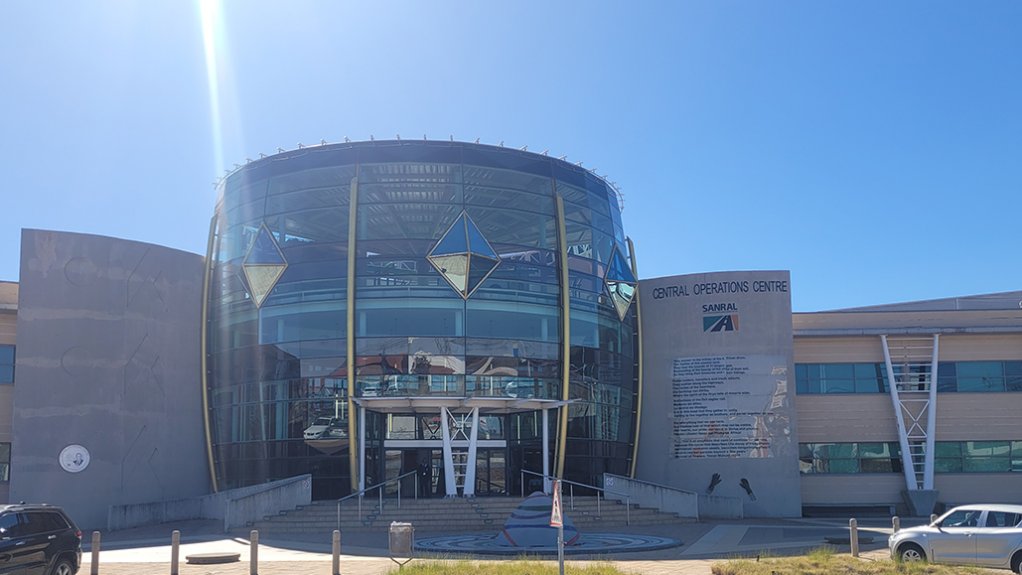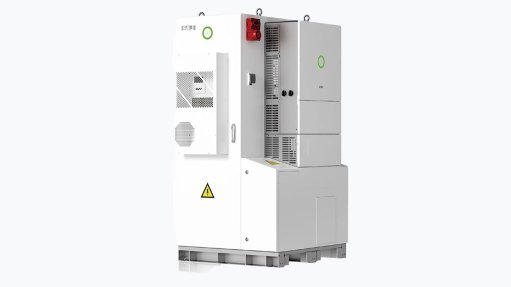Transport dept ready to deal with potholes as Minister launches Vala Zonke War Room
Transport Minister Sindisiwe Chikunga on July 31 attended the official launch of the Vala Zonke War Room, which will monitor and manage all pothole repairs in the country from the State-owned South African National Roads Agency Limited’s (Sanral's) Central Operations Centre (COC), in Centurion.
The new war room facility, situated at the Sanral COC, will have a dedicated team from various clusters to coordinate government’s ongoing efforts in repairing potholes, as well as to monitor service delivery in the transport industry.
The Department of Transport (DoT) launched the national campaign to fix potholes on August 8 last year, with a call for joint efforts by the nine provinces and all 278 municipalities, comprising eight metropolitan, 44 district and 226 local municipalities. There have since been several activities across provinces to implement the project.
Sanral was appointed as the coordinating agency to drive the campaign, which included the harmonisation of all data and information on potholes and providing the technology and technical knowledge to ensure quality delivery on the campaign.
At the launch event, Chikunga stressed that the success of the war room depended on strong government relations and communication as this impacted road infrastructure provision and maintenance.
Collaboration across all spheres of government involved with the transport sector would also be “organically fed” by programmes and projects for fixing potholes and roads on the ground, which also strengthened joint planning and budgeting efforts, she added.
“The establishment of this war room is both a bold and honest attempt government is making to fix road transport challenges presented by potholes. It is a bold step on our part because of the enormity of the challenge, and thus the vast coverage required to maintain effective deployment of this resource.
"It is also a very honest acknowledgement of the fact that we can never truly tackle this challenge without adequate and sufficient sight of the entire road network, including acting on the reported challenges.”
She also pointed out that the war room had been established owing to government's recognition of an inability to process received raw data regarding the roads network, which is owing to several reasons.
Some of the reasons she noted for this inability included missing information and incorrect data that was received, or received in an unreadable format, as well as a lack of data.
“Despite Scheduled 5 Constitutional provisions for the separation of roles, the national government has a responsibility to ensure that these roads are managed within a framework of national norms and standards to maximise their role in enabling economic activity and access to social amenities.
"Closing potholes before they deteriorate further is a crucial intervention that must stand as a flagship of what is possible through effective interdepartmental cooperation, especially with integrated planning and budgeting towards common goals. Where we have seen bottlenecks in effectively rolling out this programme nationally, there continue to be robust discussions to ensure that our pothole repair program is a success.”
Stressing the severity of the challenges involved with the local road network, with a high number of deaths and damage to vehicles having been attributed to increased accidents on roads, Chikunga stated that the DoT had recently visited and inspected a number of national roads.
This was done in provinces such as Mpumalanga and the North West.
The department will continue to visit other provinces, including the Eastern Cape and KwaZulu-Natal, in the foreseeable future.
“This has included consultation meetings that we have had with particular provinces in our national drive across all provinces to sit with provincial executives, as well as with members of the South African Local Government Association, to formalise steps to take collectively across spheres of government. We do this with the understanding that the road authorities have special and exclusive responsibility towards the roads that belong to them.
"This is, of course, notwithstanding our understanding the differences in dynamics across provinces. Our mission is to lead the development of an efficient, integrated transport system by creating a framework of sustainable policies and regulations and apply implementable models to support through the government strategies for social economic development.”
She highlighted that South Africa had about 288 different road authorities.
Chikunga pointed out that South Africa’s roads were in various states of disrepair, with some being well-maintained and others significantly deteriorated.
“This is owing to the inadequate maintenance, and lack of resources of road maintenance. It also is because of aging infrastructure, because many of our roads have actually exceeded their design life. Inadequate funding also is one of the challenges, as well as a lack of technical skills from the inability to attract and retain staff.
"This is particularly the case in poor and rural municipalities that cannot actually attract skills that are required, and engineers that we require for us to be able to maintain our road network.
"Technical investments are needed to preserve mobility and accessibility of the traveling public and freight movements. Investment in maintaining, rehabilitating, upgrading and expanding infrastructure has not kept pace with the needs of both society and the economy.”
She also stressed the urgent need to address a lack of rail infrastructure in the country, as cargo that could be transported by rail was increasingly being transported by large trucks that contribute to traffic congestion and road deterioration.
This was also owing to the fact that many of the roads trucks travel on were often not designed for excessive truck traffic.
“As a result, our roads face growing maintenance and modernisation needs. Failure to upgrade, refurbish and maintain our roads infrastructure to keep up with growing populations, the economy and technology technological advances compromises the safety, capacity and efficiency of South Africa's transport.
"The national DoT's desired outcome is to reduce all transport-related incidences and accidents, which will ultimately lead to significant reduction in injuries and fatalities”.
She also emphasised that increased rates of road accidents had placed additional pressure on institutions such as the Road Accident Fund (RAF), as this reduced the resources the RAF had available to pay out funds to claimants.
AN EVOLVING SECTOR
Chikunga also enthused that the transport sector was evolving into one of the most innovative and dynamic areas of the economy, and that innovative technologies and practices were vital for improving the safety and performance of the sector.
“Emerging technologies can offer benefits and advance the mission of providing safe, clean, accessible and efficient transport. To achieve this goal, the DoT continues to support the development and deployment of these innovative technologies.”
She also stressed the benefit innovative technologies could hold in terms of improving the cost of fixing the South African road network, and that repairing roads with conventional technologies could cost up to R10-million for a single kilometre of road.
“We are also focusing on the 159 000 km road network that is paved, that which is in a state of fair, to poor, and very poor. We still, however, have about a 592 000 km road network that is gravel. That requires attention and some of the pictures that our people are sending to us are actually saying we desperately need to move with speed towards ensuring they are fixed.”
Chikunga explained that when the Vala Zonke programme was launched last year, all provinces simultaneously were involved with the launch, and that the transportation information system was made available to all road authorities for the provision of a centralised repository on asset management.
Further, a centralised mobile photo reporting phone application – which enables members of the public to report potholes when they encounter them – was developed.
The Vala Zonke app is available for download on the Google Play and IoS Apple stores.
She also noted that the War Room would use an automated system to allocate a complaint, track progress, identify and resolve delays, intervene or provide support to address service delivery challenges, and provide feedback to the public using the app.
She also confirmed that there would be two apps available: one for the general public, and another for relevant road authorities.
“The Vala Zonke War Room is a key component in addressing national government's infrastructure development programme. As government, we are confident that through this coordinated and seamless approach provided by this War Room, we will be able to tackle potholes and the challenges they present and make an important difference that our people can witness and experience.
"The rollout plan places Sanral as a centre in coordinating all pothole-fixing programmes. We will be requesting provinces to ensure that they are involved. We request provinces to give us at least two officials who will work together with the operator and the supervisor that will actually be leading our War Room so that there is coordination.”
She stated that Sanral’s COC already had the infrastructure, technology and personnel to ensure effective monitoring and coordination of intervention programmes for all operations, maintenance and other road-related activities.
Through this War Room, information coud be managed easily through visual information that would be conveyed more effectively, with visualisation of relevant data.
A specialist at the War Room would also be able to analyse the data and respond appropriately, she added.
“This will be done in real time, as information flows into the centre and is responded to expeditiously. We expect that decision makers will be meeting at least every week, so that if there are issues that require strategic intervention, they will be there to just do that,” she stated.
Article Enquiry
Email Article
Save Article
Feedback
To advertise email advertising@creamermedia.co.za or click here
Comments
Announcements
What's On
Subscribe to improve your user experience...
Option 1 (equivalent of R125 a month):
Receive a weekly copy of Creamer Media's Engineering News & Mining Weekly magazine
(print copy for those in South Africa and e-magazine for those outside of South Africa)
Receive daily email newsletters
Access to full search results
Access archive of magazine back copies
Access to Projects in Progress
Access to ONE Research Report of your choice in PDF format
Option 2 (equivalent of R375 a month):
All benefits from Option 1
PLUS
Access to Creamer Media's Research Channel Africa for ALL Research Reports, in PDF format, on various industrial and mining sectors
including Electricity; Water; Energy Transition; Hydrogen; Roads, Rail and Ports; Coal; Gold; Platinum; Battery Metals; etc.
Already a subscriber?
Forgotten your password?
Receive weekly copy of Creamer Media's Engineering News & Mining Weekly magazine (print copy for those in South Africa and e-magazine for those outside of South Africa)
➕
Recieve daily email newsletters
➕
Access to full search results
➕
Access archive of magazine back copies
➕
Access to Projects in Progress
➕
Access to ONE Research Report of your choice in PDF format
RESEARCH CHANNEL AFRICA
R4500 (equivalent of R375 a month)
SUBSCRIBEAll benefits from Option 1
➕
Access to Creamer Media's Research Channel Africa for ALL Research Reports on various industrial and mining sectors, in PDF format, including on:
Electricity
➕
Water
➕
Energy Transition
➕
Hydrogen
➕
Roads, Rail and Ports
➕
Coal
➕
Gold
➕
Platinum
➕
Battery Metals
➕
etc.
Receive all benefits from Option 1 or Option 2 delivered to numerous people at your company
➕
Multiple User names and Passwords for simultaneous log-ins
➕
Intranet integration access to all in your organisation





















